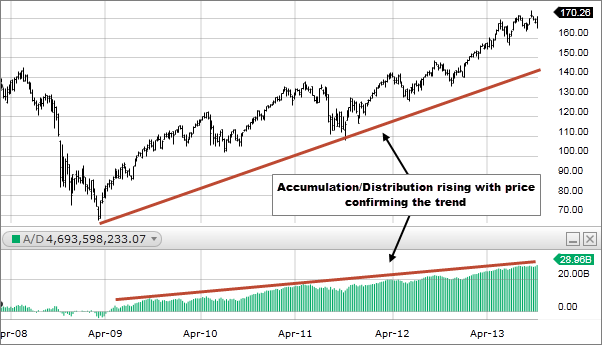Accumulation Distribution

Unlocking the Secrets of Accumulation Distribution: Your Key to Informed Trading
Introduction (approx. 150 words): Welcome to the fascinating world of trading, where the right tools and strategies can unlock the potential for incredible profits. Among the array of technical indicators, the Accumulation Distribution (AD) stands out as a potent weapon for discerning the flow of money in the market. In this comprehensive guide, we will dive deep into the intricacies of Accumulation Distribution, explore its pros and cons, and most importantly, reveal how you can leverage it to make smarter and more compelling trading decisions.
- Understanding Accumulation Distribution (approx. 250 words): The Accumulation Distribution is a powerful volume-based indicator that combines both price action and trading volume. Developed by Marc Chaikin, this unique tool helps traders analyze the buying and selling pressure surrounding an asset. By assessing the net accumulation or distribution of an asset, AD highlights whether buyers or sellers have the upper hand.
Unlike other indicators, AD takes both price and volume into account. When the indicator is rising, it suggests a higher level of accumulation, indicating strong buying pressure. Conversely, a declining AD points to increased distribution, indicating strong selling pressure.
- Pros of Using Accumulation Distribution (approx. 300 words): a) Revealing Smart Money Moves: AD is excellent at detecting the activity of institutional investors and “smart money.” When large players make significant moves, it reflects in the AD, giving you valuable insights into market sentiment.
b) Confirming Price Trends: AD acts as a powerful confirmatory tool for price trends. When the indicator aligns with the price chart, it reinforces the strength of the trend, providing traders with added confidence in their positions.
c) Divergence Signals: AD can produce valuable divergence signals, wherein the indicator’s direction deviates from the price movement. This divergence often precedes significant price reversals, allowing traders to position themselves ahead of the crowd.
d) Strong Confluence with Other Indicators: When combined with other technical indicators, such as moving averages or the Relative Strength Index (RSI), AD can enhance the accuracy of trading signals, leading to more informed decisions.
e) Objective Indicator: Since AD is based on concrete data (price and volume), it offers an objective assessment of the market, reducing emotional biases in trading decisions.
- Cons of Using Accumulation Distribution (approx. 150 words): a) Delayed Signals: Like many other indicators, AD may produce delayed signals, leading to potential missed opportunities during rapidly changing market conditions.
b) Overemphasis on Volume: In certain situations, a heavy focus on volume can lead to false signals or misinterpretations, as extreme volume spikes may not always signify meaningful price movements.
- When to Buy and Sell Using Accumulation Distribution (approx. 300 words): a) Buy Signal: Look for a rising AD accompanied by an uptrend in the price. This indicates strong buying pressure, and it may be an opportune time to enter a long position.
b) Sell Signal: Observe a declining AD paired with a downtrend in the price. This suggests strong selling pressure, signaling a potential opportunity to enter a short position.
It is crucial to validate the signals generated by AD with other technical indicators and market context to avoid false signals and ensure the best possible entry and exit points.
Conclusion (approx. 100 words): Accumulation Distribution is a powerful and unique tool that unveils the intricate dance of money within the market. Its ability to detect smart money moves, confirm trends, and identify divergence signals can be a game-changer for traders seeking to make more compelling and informed decisions. While it has its limitations, combining AD with other indicators and analysis can harness its full potential and empower you to navigate the market with confidence and clarity. Embrace the art of Accumulation Distribution, and let it be the guiding light in your journey to trading success. Happy trading!